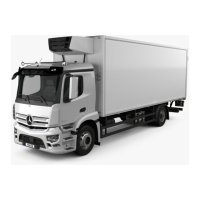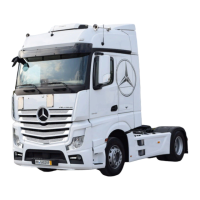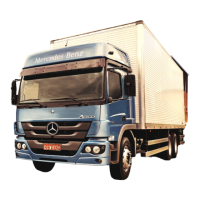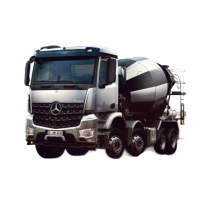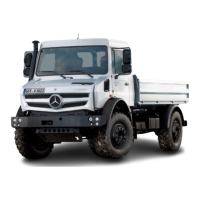appropriate to the age, weight and size of
the child
R
always
observe the instructions and safety
notes on "Children in the vehicle" in this
Owner's Manual (Y page 55) in addition
to the child restraint system manufactur-
er's installation instructions
G
WARNING
Seat belts cannot protect as intended, if:
R
they
are damaged, have been modified, are
extremely dirty, bleached or dyed
R
the seat belt buckle is damaged or
extremely dirty
R
modifications have been made to the belt
tensioners, belt anchorages or inertia reels
Damage caused to safety belts in an accident
may not be visible, e.g. by splinters of glass.
Modified or damaged seat belts can tear or
fail, for example in the event of an accident.
Modified seat belt tensioners may be
deployed unintentionally or fail to be deployed
when required. There is an increased risk of
injury, possibly even fatal.
Never modify safety belts, seat belt tension-
ers, seat belt anchorages and inertia reels.
Ensure that seat belts are not damaged or
worn and are clean. After an accident, have
the seat belts checked immediately at a quali-
fied specialist workshop.
Mercedes-Benz recommends that you only
use seat belts which have been approved
specifically for your vehicle by Mercedes-
Benz.
Correct seat belt use
Observe the safety notes on the seat belt
(Y page
51).
All vehicle occupants must be wearing the
seat belt correctly before beginning the jour-
ney. Also make sure that all vehicle occu-
pants are always wearing the seat belt cor-
rectly while the vehicle is in motion.
When fastening the seat belt, always make
sure that:
R
the
seat belt tongue is only inserted to the
belt buckle belonging to that seat.
R
the seat belt is tight across your body.
Avoid wearing bulky clothing, e.g. a winter
coat.
R
the seat belt is not twisted.
Only then can forces which occur be dis-
tributed across the surface of the seat belt.
R
the shoulder section of the belt is always
routed across the centre of your shoulder.
The shoulder section of the seat belt should
not touch your neck nor be routed under
your arm. If possible, adjust the seat belt to
the appropriate height.
R
the lap belt passes across your lap as
tightly and as low down as possible.
The lap must always be routed across your
hip joints and never across your abdomen.
This applies particularly to pregnant
women. If necessary, press the lap belt
down into your hip joints and pull tight with
the shoulder section of the belt.
R
the seat belt is not routed across sharp,
pointed or fragile objects.
If you have such items located on or in your
clothing, e.g. pens, keys or spectacles,
store these in a suitable place.
R
only one person is using a seat belt.
Infants and children must never travel sit-
ting on the lap of a vehicle occupant. In the
event of an accident, they could be crushed
between the vehicle occupant and seat
belt.
R
objects are never secured with a seat belt if
the seat belt is also being used by one of the
vehicle's occupants.
Seat belts are only intended to secure and
restrain vehicle occupants. Always observe
the instructions and safety notes on "Stow-
age compartments" for securing objects, lug-
gage or loads (Y page 115).
52
Occupant safety
Safety
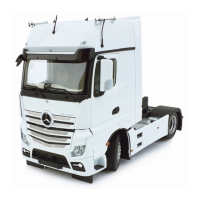
